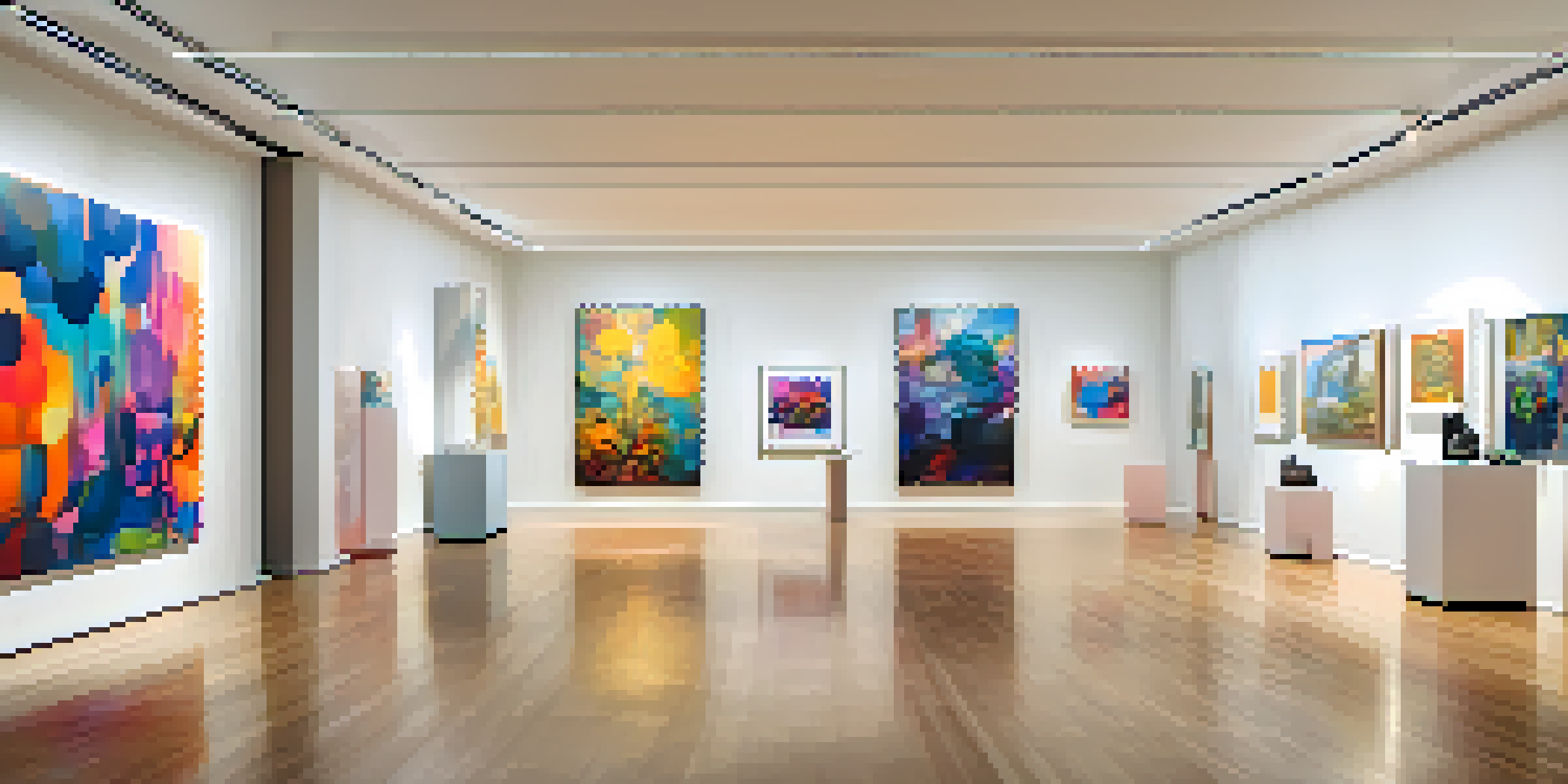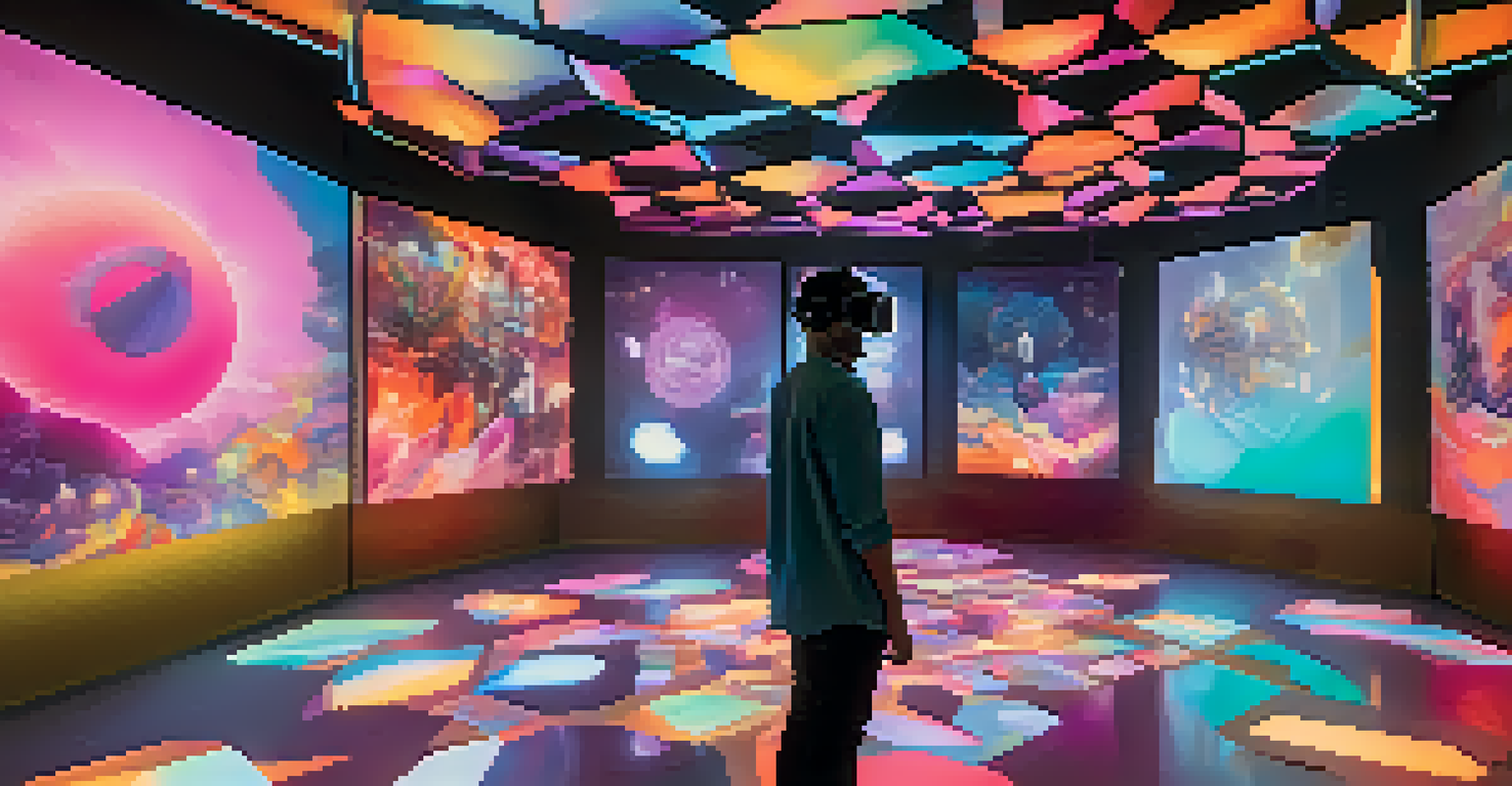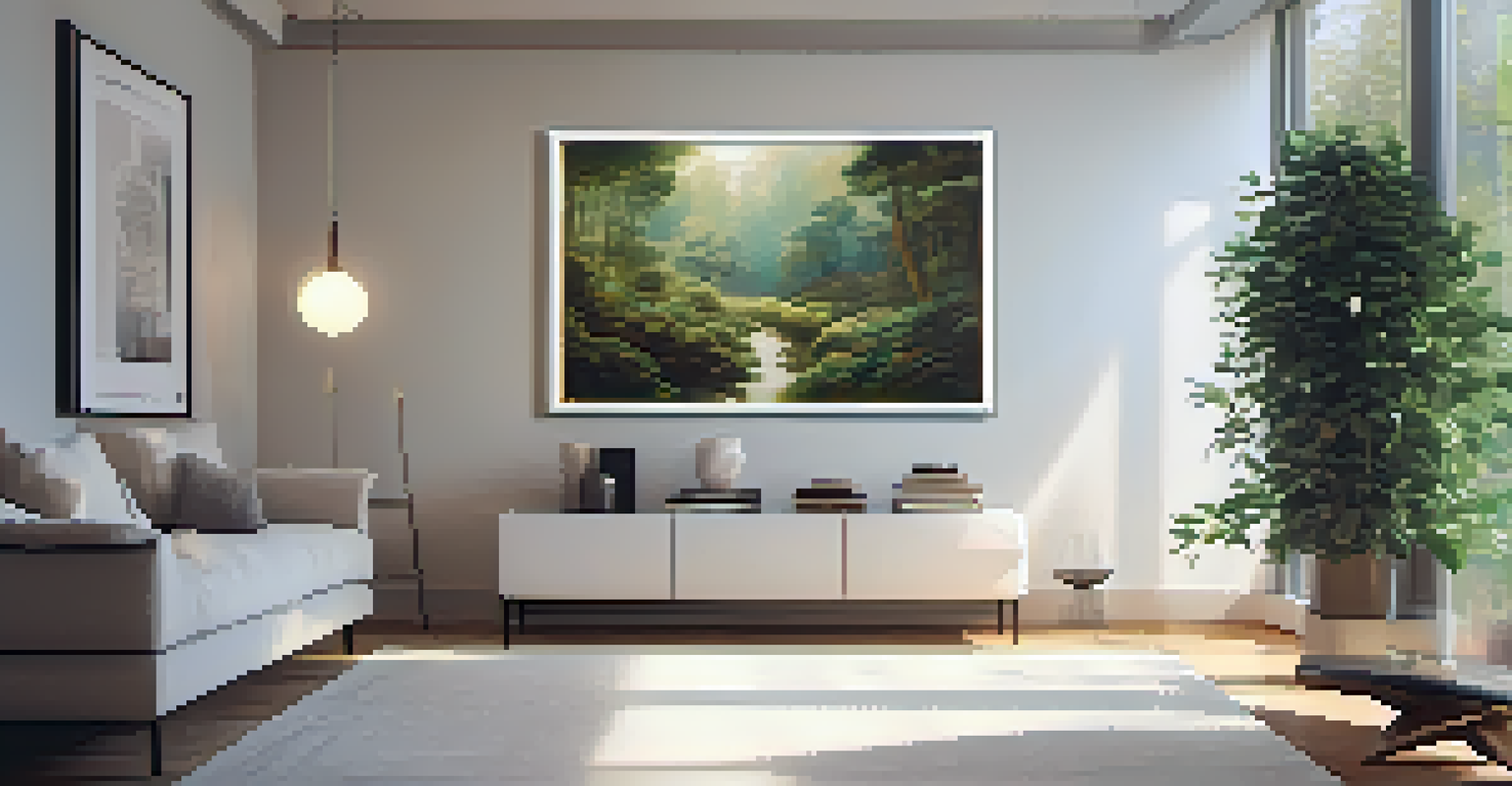The Role of Technology in Modern Art Collecting

How Technology Has Changed Art Discovery
In today's digital age, discovering art has become as easy as a few clicks. Online platforms and social media have opened up a world of possibilities for collectors to find emerging artists and unique pieces. No longer confined to physical galleries, art enthusiasts can explore diverse styles and mediums from the comfort of their homes.
Art is not freedom from discipline, but disciplined freedom.
For instance, websites like Artsy and Saatchi Art allow collectors to browse thousands of artworks while providing detailed information about the artists. This democratization of art discovery not only broadens the collector's options but also highlights underrepresented voices in the art world. Essentially, technology has transformed the art landscape into a global marketplace.
Moreover, virtual exhibitions and live-streamed gallery tours have gained popularity, especially during recent global events. These innovations have created immersive experiences that connect collectors directly with artists, fostering a sense of community and engagement that transcends geographical boundaries.
The Rise of Online Auctions and Marketplaces
Online auctions have revolutionized how art is bought and sold, making it more accessible than ever. Platforms like Paddle8 and Sotheby’s have embraced technology, allowing collectors to bid on artworks from anywhere in the world. This convenience encourages more participation, turning auctions into fast-paced, thrilling events.

With the added benefit of real-time bidding updates, collectors can make informed decisions on the fly. The transparency of online marketplaces also builds confidence among buyers, as they can easily compare prices and provenance. This shift challenges traditional auction houses to adapt and innovate in a competitive digital environment.
Art Discovery Made Easy Online
Digital platforms and social media have transformed art discovery, allowing collectors to explore diverse styles and connect with emerging artists effortlessly.
Additionally, these platforms often provide extensive resources, such as artist interviews and detailed descriptions, making it easier for collectors to understand the value and significance of each piece. As a result, online auctions are not only about acquiring art but also about the entire experience of art appreciation.
Digital Art and NFTs: A New Frontier
Digital art has emerged as a significant player in the modern art scene, largely fueled by the advent of non-fungible tokens (NFTs). These unique digital assets allow artists to sell their work in a way that ensures ownership and provenance, something that has historically been a challenge in the digital space. This innovation has created a whole new realm for collectors to explore.
The future of art is not just in the hands of the artist, but also in the hands of technology.
The hype surrounding high-profile NFT sales, like Beeple's 'Everydays,' has captured widespread attention, illustrating the potential value of digital art. For collectors, this means access to an entirely new genre that merges technology and creativity. The excitement of owning a piece of digital art can rival that of traditional works.
However, it's essential for collectors to do their due diligence, as the NFT market can be unpredictable. Understanding the technology behind blockchain and how it relates to art is crucial for making informed purchases. As this trend continues to evolve, it will undoubtedly shape the future of art collecting.
Leveraging Social Media for Art Collecting
Social media has become a vital tool for art collectors, allowing them to connect with artists, galleries, and other enthusiasts. Platforms like Instagram are flooded with art content, making it easy to discover new artists and trends. Collectors can follow their favorite creators, engage with their work, and even purchase pieces directly through these channels.
This direct interaction not only fosters relationships but also supports artists in building their brands and reaching wider audiences. For instance, many artists use social media to showcase their processes, giving collectors insight into their creative journey. Such transparency can enhance the value of a piece by creating a connection between the artist and collector.
Online Auctions Revolutionize Sales
Online auctions have made buying and selling art more accessible and exciting, fostering real-time participation and transparency for collectors.
Furthermore, social media allows for real-time feedback and engagement, which can influence trends and buying decisions. Collectors can share their acquisitions and experiences, creating a vibrant community that celebrates art in all its forms.
The Role of Virtual Reality in Art Experiences
Virtual reality (VR) is making waves in the art world, offering immersive experiences that traditional galleries can't replicate. With VR, collectors can step inside a virtual gallery, exploring artworks in a 360-degree environment. This innovative approach not only enhances the viewing experience but also creates a new dimension for engagement with art.
For example, initiatives like the VR Museum of Fine Art allow users to experience famous artworks up close and personal, regardless of their physical location. Such experiences can be particularly appealing to collectors, as they provide a unique perspective that enhances appreciation. The ability to interact with art in a virtual space opens up new possibilities for understanding and enjoyment.
Moreover, VR technology can be used for educational purposes, helping collectors learn about various art movements and techniques. As the technology continues to develop, it promises to enrich the way we experience and collect art.
The Impact of Augmented Reality on Art Viewing
Augmented reality (AR) is another technological advancement reshaping how art is viewed and collected. By superimposing digital information onto the real world, AR allows collectors to visualize how a piece might look in their own space before making a purchase. This feature eliminates uncertainty and enhances the buying experience.
Apps like Artivive enable users to interact with artworks in new ways, providing additional context or animations that bring pieces to life. This not only engages potential buyers but also enhances their understanding of the artwork's narrative. The ability to experience art in this interactive format makes the collecting process more dynamic.
Immersive Art Experiences Evolving
Technologies like virtual and augmented reality are enhancing how collectors experience and interact with art, creating dynamic and educational opportunities.
Furthermore, AR can also serve educational purposes, offering insights into an artist's techniques or the history behind a piece. As technology continues to advance, the integration of AR in art collecting will likely become more prevalent, creating richer experiences for collectors and audiences alike.
The Future of Art Collecting in a Tech-Driven World
As technology continues to evolve, the future of art collecting looks incredibly promising. From online platforms to immersive experiences, collectors have access to tools that enhance their understanding and appreciation of art. This shift towards a tech-driven landscape encourages more people to engage with art, breaking down barriers that once existed.
Moreover, the increasing integration of AI in art curation and recommendation systems is set to personalize the collecting experience even further. These advancements will help collectors discover pieces that align with their tastes, making the journey of art collecting more tailored and enjoyable. It’s an exciting time to be involved in this field.

Ultimately, the fusion of technology and art collecting not only enriches the experience for collectors but also supports artists in reaching wider audiences. As we look to the future, embracing these innovations will be key to navigating the evolving landscape of art.